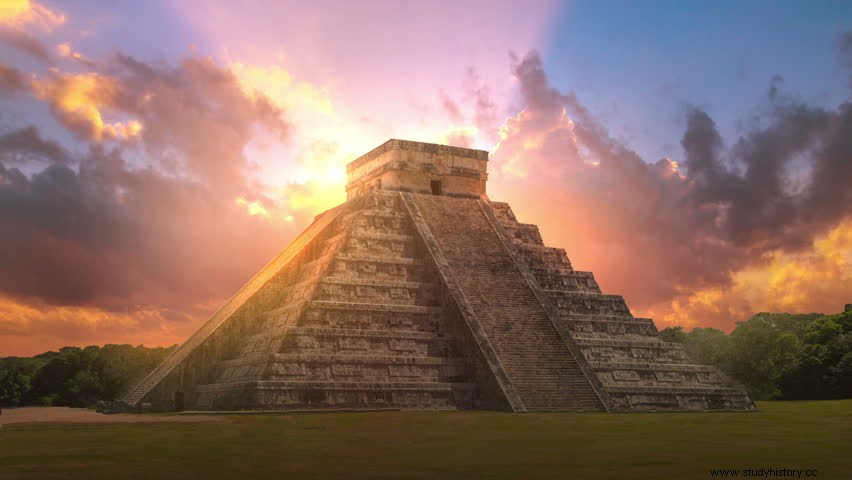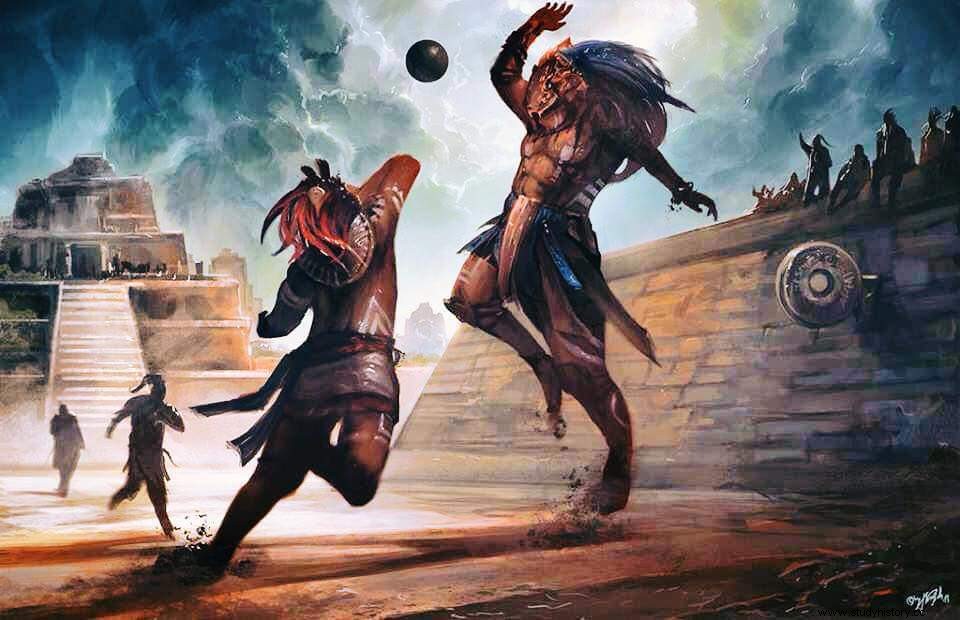One of the activities that people enjoy the most when traveling to a destination is knowing its history and the incredible deeds that the ancestors who inhabited the place did. Mexico is extremely rich in this area of tourism, and hence it is convenient to know the hidden treasures that some of its constructions keep, as is the case of the pyramid of Chichén Itzá .
Chichen Itza is one of the 7 wonders of the modern world . It is located on the Yucatan Peninsula, in Mexico, and is one of the most striking Mayan constructions that can be found throughout this country of America. If you have already heard about the Mayan civilizations and all the advances they managed to conquer even with their little approach to technology as we know it today, it will not seem strange to you to know that there are many curious facts about the foundation of Chichén Itzá.

The first thing is that we must remember that they believed in supernatural forces of the underworld and that many of their actions were aimed at obtaining their favor for two main objectives:protection and a good amount of rain to have abundant harvests. In fact, the meaning of Chichen Itza would be something like “The mouth of the well of the water sorcerers ”, and it is not uncommon that it has been proven that, within the cenote considered sacred and from where this pyramid is erected, a large number of remains of all kinds converge:animals, humans, materials, intermingled with pieces of enormous cultural value and monetary, such as precious stones.
The most relevant data
The Mayans left clear evidence that they had advanced knowledge in geometry, astronomy and mathematics. In fact, the construction of the Temple of Kukulkan was not an unplanned projection, but every detail was very well taken care of. This temple has 4 steps placed on each side of the pyramid. Each of them has 91 steps, resulting in the multiplication of a total of 364 steps, which, added to the highest part, result in the number 365, the number of days of their calendar and ours.
Another piece of information that is valuable to know regarding this topic is that under this temple there is also a cenote. It means that the Mayans took into account all the elements that converged in the environment to develop their buildings. In fact, the subsequent scientific studies carried out on its structure show that there is a certain level of acoustics in the area and that this effect is not reflected with any worthless element, but rather the resulting sound is similar to the song of a quetzal.
The Mayans were also very organized in terms of the places they allocated to each activity, especially when it was aimed at the sacrifices they organized in favor of their gods. Hence, there is a well-carved table and represented with valuable figures for them, who provided the necessary company to each rite.
They were even good sportsmen, since the Mayans practiced the ball game. It consisted of introducing a ball made of rubber through a hole that was placed in the upper part of a wall. Even when it was an entertainment activity, it also had its share of spiritual intervention. In order for the players to achieve this goal, they could only use their face, knees and elbows, which gave the sport greater complexity in its practice. Without a doubt, they knew very well how to spend their days full of work, responsibilities and also social spaces for enjoyment.

A high value property
Although at present this construction is in the hands of the regional government of Mexico (in Yucatan), it was not always like that, and it seems quite incredible to imagine that in other times freedom was given so that such a national treasure was left in the hands of a private individual. . However, this did happen, and during the 20th century all this property passed into the hands of the American millionaire Herbert Thompson , who was in charge of studying very thoroughly everything that was found there and, of course, extracting pieces of incalculable value. Subsequently, the property suffered an expropriation by the Mexican government, and, in a third phase, it returned to the hands of Thompson's heirs, until finally its property fell to the current administration.
In fact, these are the most curious data that can be dealt with regarding this structure, and not so much because of the change of owners per se, but because of the possible loss that was generated of articles of daily use in that society and that today they could be quite useful tools to better recreate the structure of life they led.
The best tourism in Mexico
Within the scenarios that tourists seek to explore, Chichen Itza is occupying a position of honor. It is one of the most important references in this matter that exists in all of Mexico and that leads to being considered a mandatory visit point when arriving in Cancun and the Riviera Maya. Currently, Chichen Itza is one of the most visited tourist sites in Mexico, due to its cultural and historical importance. Statistics show that the number exceeds one million people and this fact makes it the second most popular historic center, only surpassed by Teotihuacán.
With all these data, it is not surprising that UNESCO has placed its quota of recognition for such a place, which is why in 1988 it was declared a World Heritage Site, a fact that still adds much more value to it than it already gathers for its own characteristics.
The place exists and the tools to get there too, but if you want to know more about Chichén Itzá and other Mexican tourist destinations, you can find more information at lanzaroteyviaja.com.
